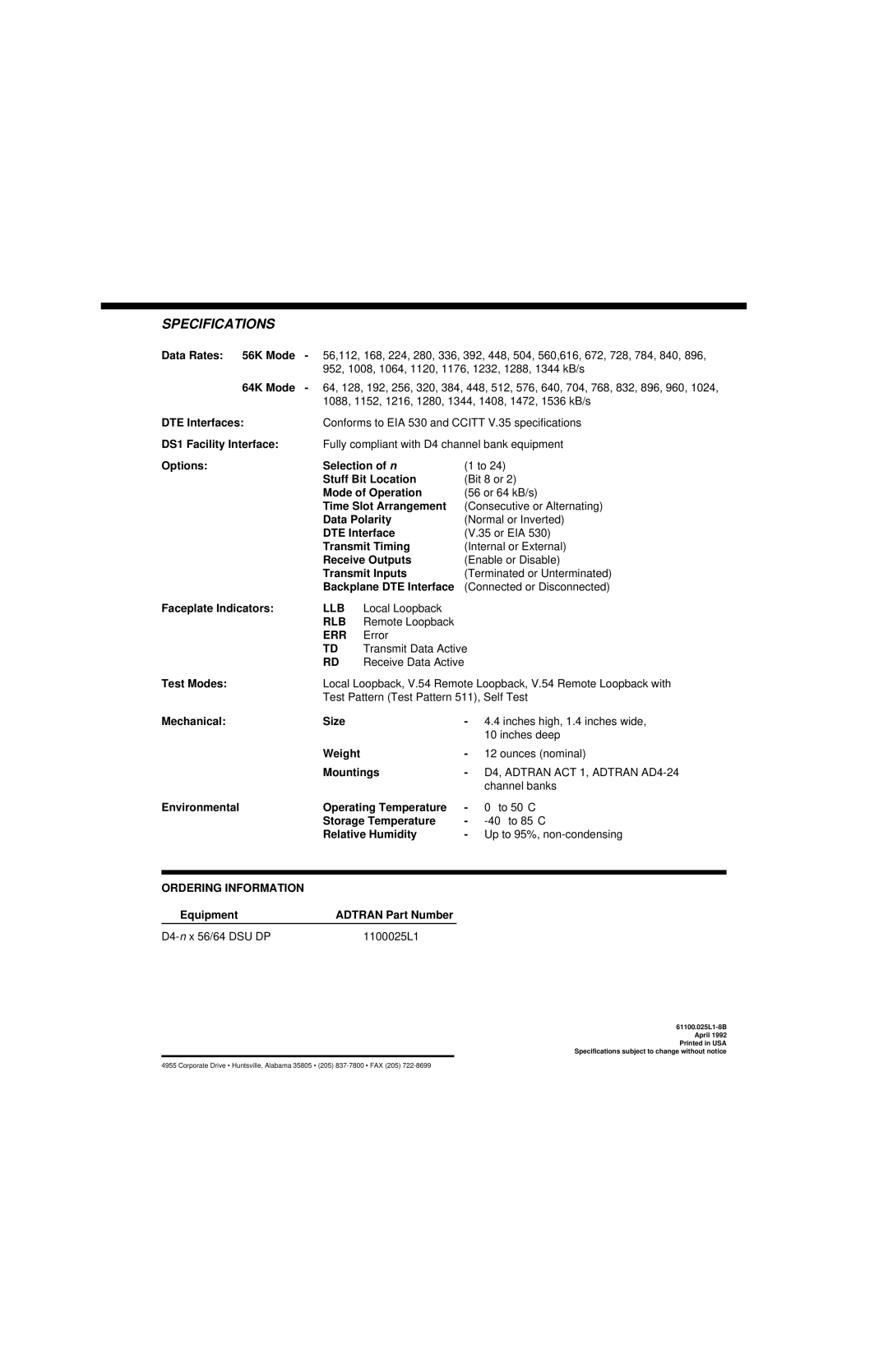D4-n x 56 DSU DP, D4-n x 64 DSU DP specifications
ADTRAN D4-n x 64 DSU DP and D4-n x 56 DSU DP are advanced digital service units designed to enhance telecommunications and data networking capabilities. These devices provide essential interfaces for connecting multiple DS1 or DS0 signals to central office equipment, ensuring reliable communication over traditional TDM (time-division multiplexing) infrastructures.One of the main features of the D4-n x 64 DSU DP is its ability to support up to 64 DS0 channels over a single DS1 line. This capability allows for efficient utilization of bandwidth, catering to businesses with high data transmission needs. Similarly, the D4-n x 56 DSU DP accommodates up to 56 DS0 channels, making it suited for operations requiring robust data services but with slightly lower capacity needs.
Both units employ advanced digital signal processing technologies, which help in maintaining signal integrity while minimizing latency. These devices utilize effective error correction techniques, ensuring that data packets are transmitted securely and accurately. The support for various framing formats, including ESF and SF, enhances compatibility with different network configurations.
In terms of characteristics, the ADTRAN D4-n x 64 and D4-n x 56 DSU DP models are equipped with intuitive interface options, making them user-friendly and easy to configure. They feature built-in diagnostics tools that allow network administrators to monitor performance, troubleshoot issues, and make real-time network adjustments. This capability is critical for maintaining uptime and performance in business-critical applications.
The units also support extensive network management features, including SNMP (Simple Network Management Protocol), enabling remote management capabilities. Administrators can perform firmware upgrades, access detailed logs, and configure settings without needing physical access to the device.
In conclusion, the ADTRAN D4-n x 64 DSU DP and D4-n x 56 DSU DP are powerful solutions for organizations looking to leverage their existing TDM infrastructure while improving data efficiency and reliability. With their robust feature set and enhanced management capabilities, these devices are well-poised to meet the evolving needs of modern telecommunications. They exemplify a strong blend of traditional and contemporary network technologies, making them a valued asset in any data-driven environment.

